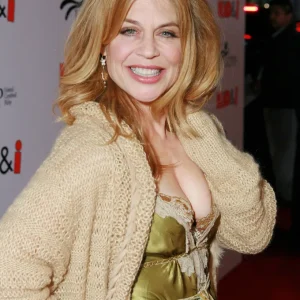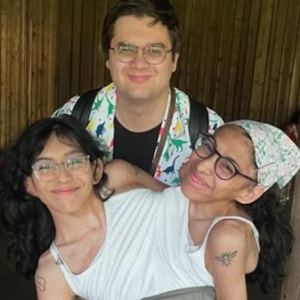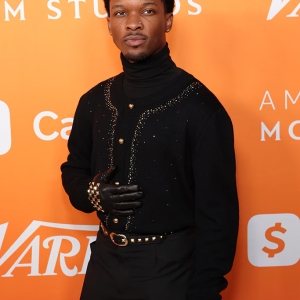Angie Dickinson is one of the most iconic names in Hollywood, known for her unforgettable performances in both film and television. Over a career that spans more than six decades, Dickinson has captivated audiences with her charm, talent, and versatility. Her journey from small-town beginnings to becoming one of Hollywood’s most respected actresses is a story of determination and groundbreaking achievements. In this article, we explore the life and career of Angie Dickinson, highlighting the milestones that have solidified her as a true entertainment icon.

Angeline Brown, who later adopted the stage name Angie Dickinson, was born on September 30, 1931, in the small town of Kulm, North Dakota. Raised in a modest household, Dickinson’s early life was far removed from the glitz and glamour of Hollywood. Her father was a newspaper publisher, and her family moved to Burbank, California, when she was a child. It was in Burbank, close to the entertainment capital of the world, that Dickinson’s dreams of stardom began to take shape.
Initially, Angie pursued a career in journalism, attending Glendale Community College with the hope of becoming a writer. However, her path shifted when she entered and won several beauty contests in the early 1950s, leading her to the world of acting. This newfound exposure gave her the confidence and opportunity to pursue a career in the entertainment industry, and soon, she began her ascent in Hollywood.
Breaking Into Hollywood: Early Struggles and Breakthroughs

Like many actors in the early stages of their careers, Angie Dickinson faced her share of challenges. Her television debut came in the mid-1950s with guest appearances on various TV shows, where her beauty and charisma quickly caught the attention of producers. One of her early breaks came when she appeared on The Colgate Comedy Hour and subsequently landed a recurring role on The Bob Hope Show. These roles showcased her potential as an actress, and it wasn’t long before more opportunities followed.
Dickinson’s film debut came in 1954, in a small, uncredited role in the musical comedy Lucky Me. While her early film roles were brief, they were essential in building her presence in the industry. In 1959, she received her big break with a role that would change her career trajectory—starring as Feathers in Howard Hawks’ classic Western Rio Bravo. Working alongside legendary actors like John Wayne and Dean Martin, Dickinson’s portrayal of the strong and independent Feathers earned her critical acclaim and established her as a rising star in Hollywood.
The 1960s: A Defining Decade
The 1960s proved to be a pivotal decade for Angie Dickinson. Following the success of Rio Bravo, she quickly became one of Hollywood’s most sought-after leading ladies. Her ability to adapt to a variety of roles, from Westerns to crime thrillers, made her a versatile talent in the industry.
One of her most memorable roles during this time was in The Killers (1964), a crime thriller directed by Don Siegel. Based on a short story by Ernest Hemingway, The Killers saw Dickinson playing the role of Sheila Farr, a femme fatale caught in a dangerous web of intrigue. The film was a critical success, and Dickinson’s performance further solidified her reputation as an actress who could blend glamour with grit.
Throughout the 1960s, Angie Dickinson worked alongside some of Hollywood’s biggest male stars, including Frank Sinatra, Burt Lancaster, and Lee Marvin. Her collaborations with Sinatra extended beyond the screen, as she became a part of his Rat Pack circle, a testament to her status as a true Hollywood insider.
Trailblazing Television: Police Woman and Beyond

While Angie Dickinson had already achieved considerable success in film, it was her role in television that would solidify her place in entertainment history. In 1974, she took on the groundbreaking role of Sergeant Pepper Anderson in the hit NBC series Police Woman. The show was revolutionary, as it featured Dickinson as a tough, intelligent, and capable female police officer—one of the first major portrayals of a woman in law enforcement on television.
Police Woman was a huge commercial success, earning Dickinson a Golden Globe Award for Best Actress in a Drama Series in 1975. The show’s impact was profound, paving the way for future female-led action and crime series. Dickinson’s portrayal of Sergeant Anderson broke new ground for women in television, proving that female characters could lead in traditionally male-dominated genres.
1980s and 1990s: A Career of Consistent Excellence

Following the success of Police Woman, Angie Dickinson continued to work steadily throughout the 1980s and 1990s, taking on a variety of roles in television movies and guest appearances. One of her standout film performances during this period came in Brian De Palma’s thriller Dressed to Kill (1980), where she played Kate Miller, a woman whose life takes a tragic turn. The film received critical praise, and Dickinson’s portrayal was both haunting and captivating, cementing it as one of her most memorable roles.
In the 1990s, Dickinson continued to take on roles that challenged her creatively. In 1993, she appeared in Even Cowgirls Get the Blues, directed by Gus Van Sant, which further demonstrated her commitment to exploring complex characters, even as she moved into the later stages of her career.
Angie Dickinson’s Legacy and Current Life

Today, Angie Dickinson is regarded as a true Hollywood legend. Though she has largely stepped away from acting, her legacy in the industry is undeniable. Her groundbreaking roles, particularly in television, paved the way for women in entertainment, and her contributions to film have left a lasting mark on cinema.
Now enjoying a quieter life away from the spotlight, Dickinson focuses on spending time with family and friends. She occasionally makes public appearances, but her preference for privacy underscores her humble nature, despite her decades of stardom. Her body of work, however, continues to resonate with audiences and remains a significant part of Hollywood history.

Angie Dickinson’s career is one of remarkable talent, resilience, and pioneering achievements. From her early days in North Dakota to becoming one of Hollywood’s most sought-after stars, Dickinson’s journey is an inspiring example of what it means to persevere in a challenging industry. Her iconic roles in film and television have had a lasting impact, particularly her groundbreaking work on Police Woman, which set a new standard for female characters in law enforcement.
Her ability to portray both glamorous and tough, gritty characters has set her apart as one of the most versatile actresses of her time. Angie Dickinson’s legacy as a trailblazer and a Hollywood legend will continue to inspire future generations of actresses, reminding us all of the power of determination, talent, and grace.


